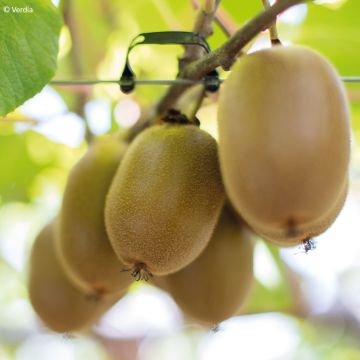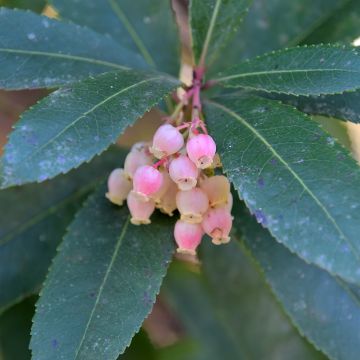

Framboisier Rustica - Rubus idaeus
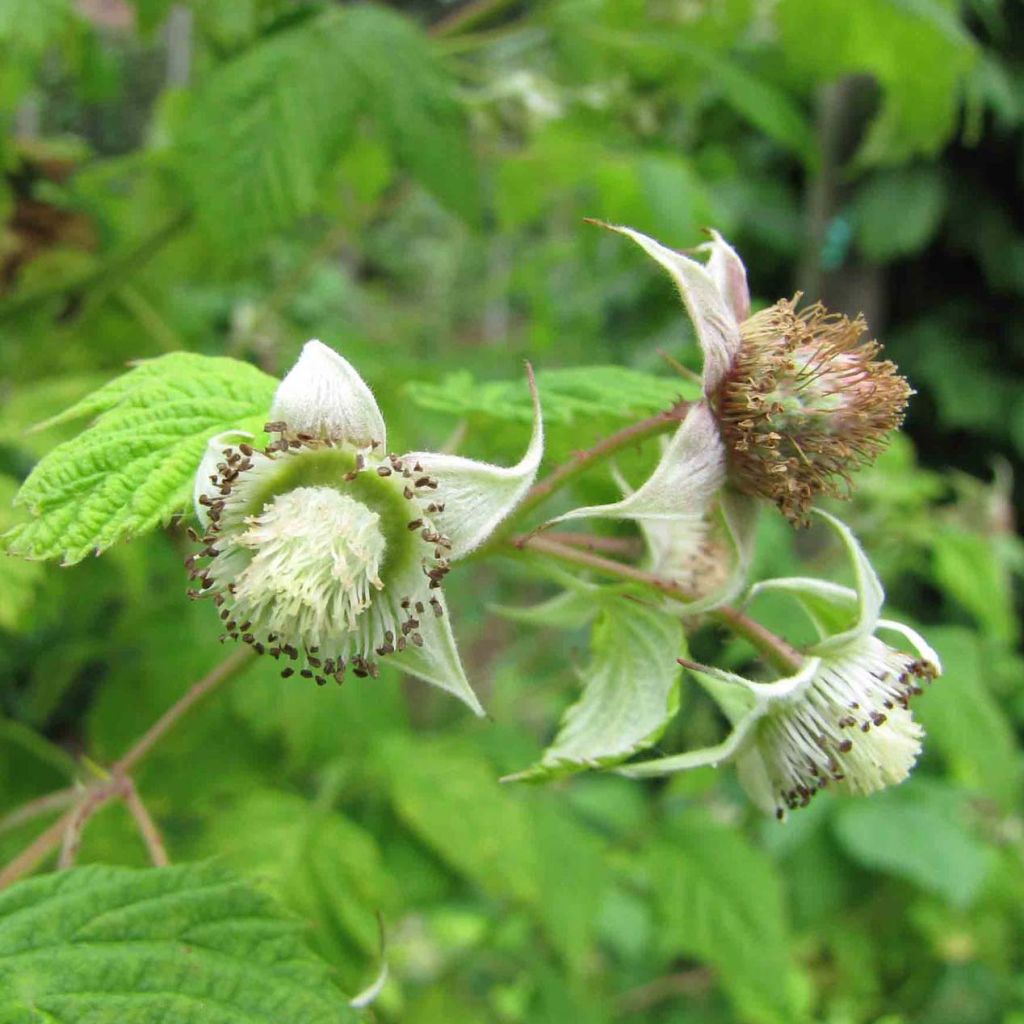

Framboisier Rustica - Rubus idaeus


Framboisier Rustica - Rubus idaeus
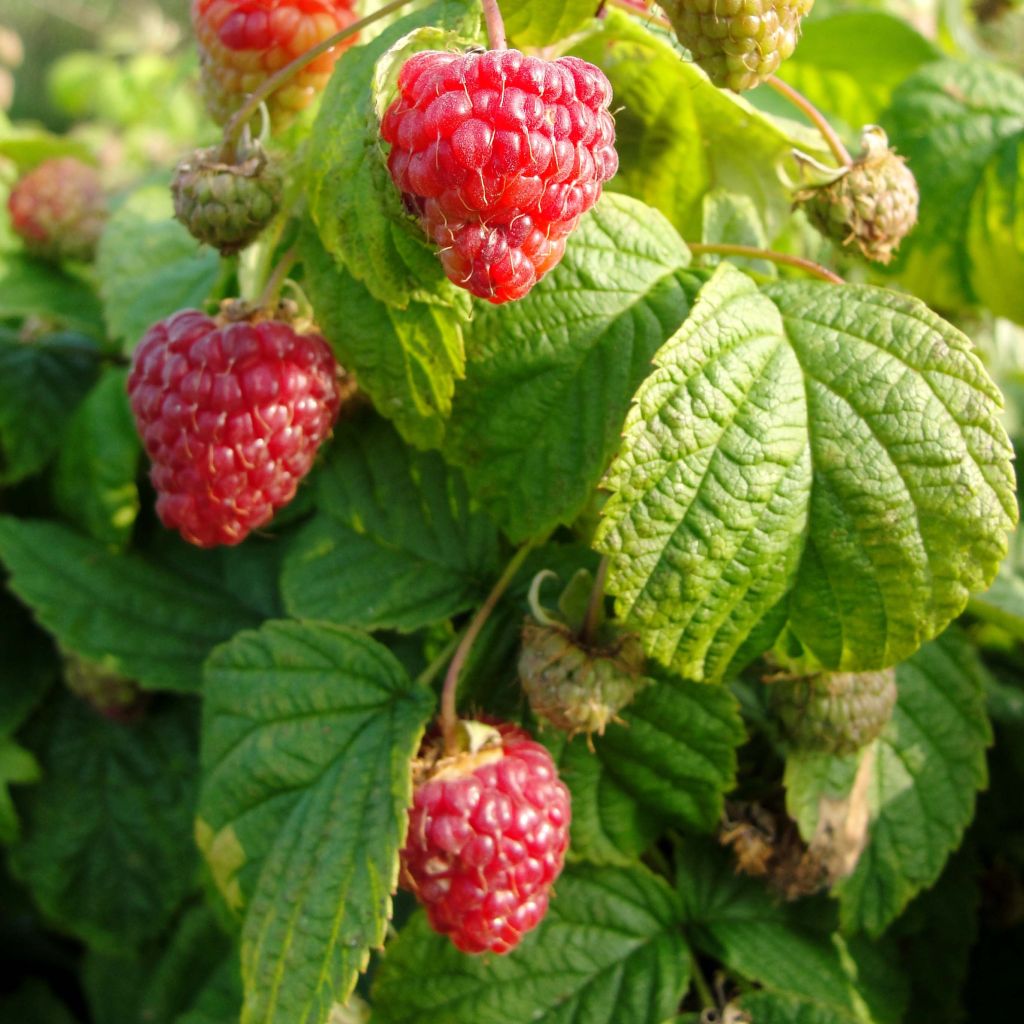

Raspberry Rustica- Rubus idaeus


Raspberry Rustica- Rubus idaeus


Raspberry Rustica- Rubus idaeus


Raspberry Rustica- Rubus idaeus


Raspberry Rustica- Rubus idaeus
Raspberry Rustica- Rubus idaeus
Rubus idaeus Rustica
Raspberry, Red Raspberry, European Raspberry
Drought-resistant with regular watering. Slow growth but seems to pick up with autumn rains. Looking forward to the next yield.
Nathalie F., 26/12/2020
Special offer!
Receive a €20 voucher for any order over €90 (excluding delivery costs, credit notes, and plastic-free options)!
1- Add your favorite plants to your cart.
2- Once you have reached €90, confirm your order (you can even choose the delivery date!).
3- As soon as your order is shipped, you will receive an email containing your voucher code, valid for 3 months (90 days).
Your voucher is unique and can only be used once, for any order with a minimum value of €20, excluding delivery costs.
Can be combined with other current offers, non-divisible and non-refundable.
Why not try an alternative variety in stock?
View all →This plant carries a 6 months recovery warranty
More information
We guarantee the quality of our plants for a full growing cycle, and will replace at our expense any plant that fails to recover under normal climatic and planting conditions.
Description
Rubus idaeus 'Rustica', also marketed under the name 'Yummy', is a recent variety with exceptional qualities. It forms a bushy and compact plant, measuring about 50cm (20in) in all directions. It is ideal for container gardening on patios and balconies, and works wonders in vegetable plots. You can even grow it in ornamental gardens. It fruits quickly. It bears fruit on the current year's wood. This charming raspberry is thankfully free from thorns so children and adults will love it! This hardy raspberry is easy to grow and is resistant to diseases. It will produce fruit from summer to autumn.
Rubus idaeus belongs to the Rosaceae family, like strawberries, blackberries, and wild roses. It is native to temperate Europe and Asia (from Turkey to China and Japan) and has been cultivated since the Middle Ages in gardens. It can be found in mountain undergrowth, as well as on plains. It is a suckering shrub, composed of upright, cylindrical stems, which die in the second year after fruiting. The stump produces new stems every year. The 'Rustica' variety was developed by Dutch horticulturist Jan de Boer, who wanted to obtain a raspberry bush adapted to small spaces, such as urban gardens. It was named in honour of the 90th anniversary of the famous gardening magazine 'Rustica'.
This variety's habit is naturally compact. The stems generally do not exceed 50cm (20in) in height and width. The deciduous foliage is medium green and dense. It serves as a backdrop for the lovely white flowering that occurs from June to August. It consists of flowers measuring 2 to 3cm (1in) in diameter, grouped in clusters of 5 to 10. Pollination is carried out by bees, bumblebees, and butterflies. The flowers are followed by an abundance of raspberries, which are actually composed of small fleshy drupes clustered together. They are easily detachable from the bush when ripe. The medium-sized fruits are deep red. They boast a balanced and fragrant flavour. They can be harvested from July to September.
To fully enjoy their flavour, raspberries should be consumed quickly after picking, as they do not keep well. If you have a bountiful harvest, consider making sauces, sorbets, tarts, or jams. You can also freeze them. One plant can produce fruit for about 10 years.
Rubus idaeus 'Rustica' is as decorative as it is delicious. It can be planted in containers on patios and balconies, in vegetable plots, or in ornamental gardens. It is easily grown in non-scorching sun or partial shade, in moist, fertile, and well-drained garden soil. Regularly water raspberries grown in containers, as the soil dries out more quickly than in open ground.
Maintenance is limited to annual pruning of the oldest stems, which should be done in early spring. This will encourage earlier fruiting. Simply prune every other branch in March. Alternatively, you can cut back all the branches to a few centimetres above the ground at the same time. This variety flowers and bears fruit on the current year's growth, so this will not prevent you from enjoying a bountiful harvest, albeit a little later.
Report an error about the product description
Raspberry Rustica- Rubus idaeus in pictures
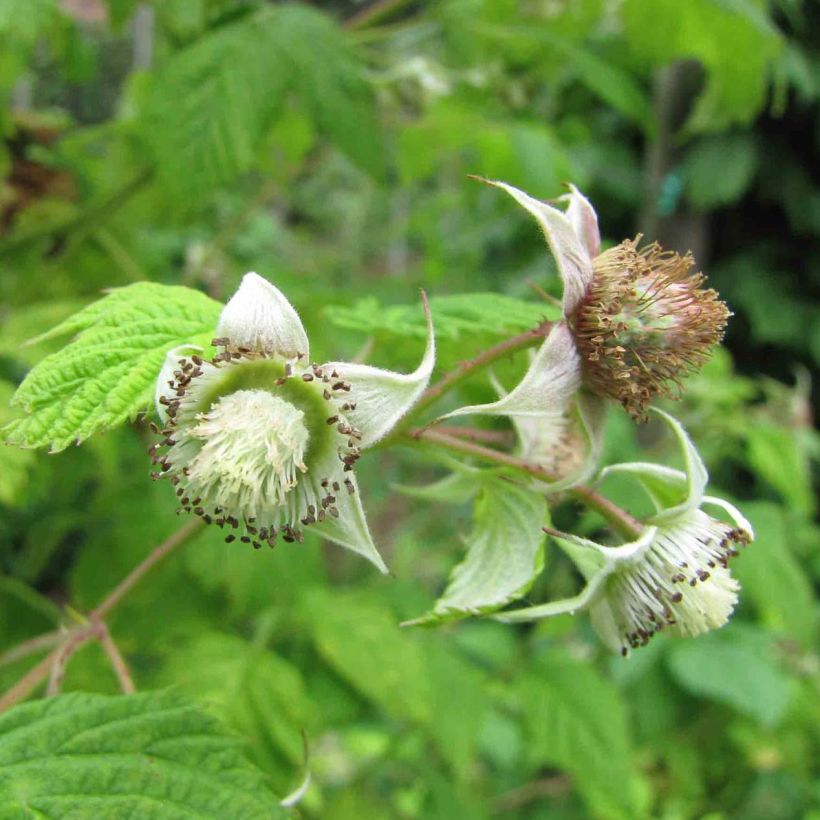



Plant habit
Fruit
Flowering
Foliage
Botanical data
Rubus
idaeus
Rustica
Rosaceae
Raspberry, Red Raspberry, European Raspberry
Cultivar or hybrid
Other Raspberry plants
View all →Planting and care
It prefers humus-rich soil that retains moisture, even in summer, without too much limestone. It appreciates partially shaded but bright exposures. In cool regions, it will tolerate sunlight well. In warmer and sunnier regions, it prefers partial shade. Plant it from October to March in ordinary soil enriched with compost and well-rotted manure.
Water regularly to encourage root development in the first year of planting. Provide additional water during periods of high heat or prolonged drought. Weed the soil surface, especially at the beginning of planting, and apply mulch to retain moisture in summer.
For pot planting, place gravel or clay balls at the bottom of the container to facilitate drainage. Fill the pot with a mixture of soil, compost, and potting soil.
It can be susceptible to diseases if growing conditions are not optimal (raspberry anthracnose, raspberry rust, powdery mildew, grey mould during rainy periods, or Botrytis). The damage observed in cultivation is due to unfavourable weather conditions, especially during cold springs that allow micro-fungi present in the soil to infest the vegetation. To protect the bushes, it is recommended to fertilise them with organic fertilisers that encourage anaerobic bacteria to multiply in the soil, which strengthens the soil's ability to stimulate the plants' immune system. Raspberry bushes can also be attacked by parasites, such as raspberry worms, the larvae of a small beetle that lodges in the fruits, without causing significant damage.
Raspberries easily multiply through suckers that grow near the base: remove them and replant them elsewhere in the garden, if desired.
Planting period
Intended location
Care
-
, onOrder confirmed
Reply from on Promesse de fleurs
Similar products
Haven't found what you were looking for?
Hardiness is the lowest winter temperature a plant can endure without suffering serious damage or even dying. However, hardiness is affected by location (a sheltered area, such as a patio), protection (winter cover) and soil type (hardiness is improved by well-drained soil).

Photo Sharing Terms & Conditions
In order to encourage gardeners to interact and share their experiences, Promesse de fleurs offers various media enabling content to be uploaded onto its Site - in particular via the ‘Photo sharing’ module.
The User agrees to refrain from:
- Posting any content that is illegal, prejudicial, insulting, racist, inciteful to hatred, revisionist, contrary to public decency, that infringes on privacy or on the privacy rights of third parties, in particular the publicity rights of persons and goods, intellectual property rights, or the right to privacy.
- Submitting content on behalf of a third party;
- Impersonate the identity of a third party and/or publish any personal information about a third party;
In general, the User undertakes to refrain from any unethical behaviour.
All Content (in particular text, comments, files, images, photos, videos, creative works, etc.), which may be subject to property or intellectual property rights, image or other private rights, shall remain the property of the User, subject to the limited rights granted by the terms of the licence granted by Promesse de fleurs as stated below. Users are at liberty to publish or not to publish such Content on the Site, notably via the ‘Photo Sharing’ facility, and accept that this Content shall be made public and freely accessible, notably on the Internet.
Users further acknowledge, undertake to have ,and guarantee that they hold all necessary rights and permissions to publish such material on the Site, in particular with regard to the legislation in force pertaining to any privacy, property, intellectual property, image, or contractual rights, or rights of any other nature. By publishing such Content on the Site, Users acknowledge accepting full liability as publishers of the Content within the meaning of the law, and grant Promesse de fleurs, free of charge, an inclusive, worldwide licence for the said Content for the entire duration of its publication, including all reproduction, representation, up/downloading, displaying, performing, transmission, and storage rights.
Users also grant permission for their name to be linked to the Content and accept that this link may not always be made available.
By engaging in posting material, Users consent to their Content becoming automatically accessible on the Internet, in particular on other sites and/or blogs and/or web pages of the Promesse de fleurs site, including in particular social pages and the Promesse de fleurs catalogue.
Users may secure the removal of entrusted content free of charge by issuing a simple request via our contact form.
The flowering period indicated on our website applies to countries and regions located in USDA zone 8 (France, the United Kingdom, Ireland, the Netherlands, etc.)
It will vary according to where you live:
- In zones 9 to 10 (Italy, Spain, Greece, etc.), flowering will occur about 2 to 4 weeks earlier.
- In zones 6 to 7 (Germany, Poland, Slovenia, and lower mountainous regions), flowering will be delayed by 2 to 3 weeks.
- In zone 5 (Central Europe, Scandinavia), blooming will be delayed by 3 to 5 weeks.
In temperate climates, pruning of spring-flowering shrubs (forsythia, spireas, etc.) should be done just after flowering.
Pruning of summer-flowering shrubs (Indian Lilac, Perovskia, etc.) can be done in winter or spring.
In cold regions as well as with frost-sensitive plants, avoid pruning too early when severe frosts may still occur.
The planting period indicated on our website applies to countries and regions located in USDA zone 8 (France, United Kingdom, Ireland, Netherlands).
It will vary according to where you live:
- In Mediterranean zones (Marseille, Madrid, Milan, etc.), autumn and winter are the best planting periods.
- In continental zones (Strasbourg, Munich, Vienna, etc.), delay planting by 2 to 3 weeks in spring and bring it forward by 2 to 4 weeks in autumn.
- In mountainous regions (the Alps, Pyrenees, Carpathians, etc.), it is best to plant in late spring (May-June) or late summer (August-September).
The harvesting period indicated on our website applies to countries and regions in USDA zone 8 (France, England, Ireland, the Netherlands).
In colder areas (Scandinavia, Poland, Austria...) fruit and vegetable harvests are likely to be delayed by 3-4 weeks.
In warmer areas (Italy, Spain, Greece, etc.), harvesting will probably take place earlier, depending on weather conditions.
The sowing periods indicated on our website apply to countries and regions within USDA Zone 8 (France, UK, Ireland, Netherlands).
In colder areas (Scandinavia, Poland, Austria...), delay any outdoor sowing by 3-4 weeks, or sow under glass.
In warmer climes (Italy, Spain, Greece, etc.), bring outdoor sowing forward by a few weeks.



















































